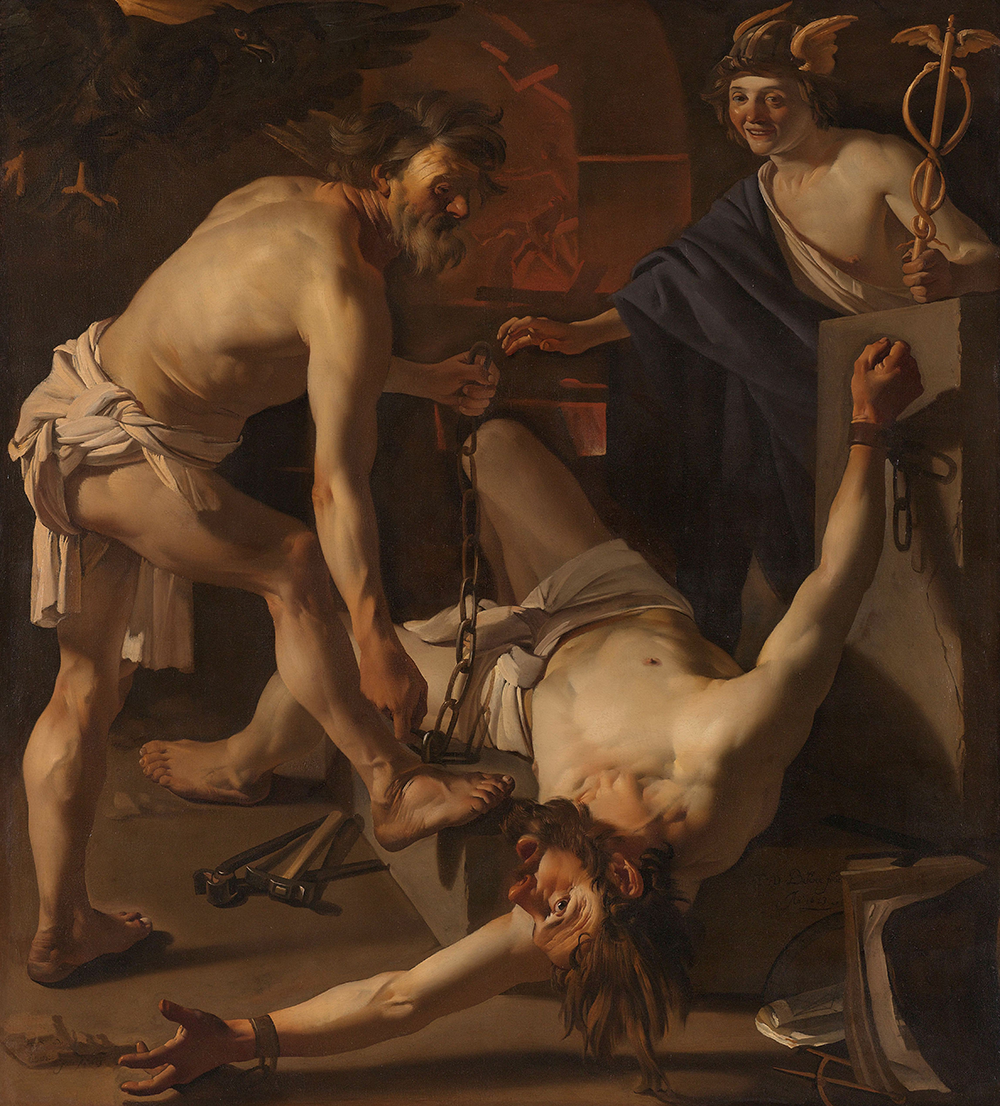Who lives in fear will never be a free man.
—Horace, 19 BCDevil’s Advocate
Imagining hell.
Our lives had no future, our only ambition being to go from the convent directly to heaven, untouched by the world. They were waiting for us in heaven, with open arms and celestial songs, the saints, the angels, the archangels, and the cherubs, who, among the clouds, would lead us for eternity to the kingdom of God and the Virgin Mary.
Our only enemy was the devil. We knew everything about him. In fact, we knew more about the devil than about God: all his tricks, all the means he used to make us fall into sin. We also knew hell down to its last corner, knew it so intimately we felt we could navigate it with our eyes closed. We knew all about the pots of scalding oil in which the devil placed the naked sinners, only to take them out with their skin in tatters. We knew he had enormous iron pitchforks that he used to move souls in the fire pits, stirring them as if they were pieces of meat in a pot. We knew he had millions of chains that he used to tie up souls, in order to drag them along trails and mountains seeded with bits of glass and thorns. The devil was large, agile; he could leap many feet and was always dressed in red or phosphorescent green. His hair always pointed up, and he also had horns like a bull. His yellow eyes shot flames, and his nails were long and green. He had big teeth like a burro, and when he opened his mouth, there was the awful smell of sulfur. Hell was full of animals we’d never heard of—lions, serpents, caimans, and many others, large, small, but all terrible, all shut away in dark caves. If you had sinned with your eyes, the devil would remove them with hot needles; and if you had sinned with your mouth, he’d cut your tongue into pieces. There was nothing we didn’t know about the devil, and of course they never let us forget him. If we threw out strands of thread, they told us the devil was going to seize them and torture us with them in hell; if we tossed out something to eat, they said the same. If we didn’t confess and took communion while in sin, our bodies would be dotted with filthy sores that the devil would fill with green, red, and yellow worms to devour us.
Sister Dolores Castañeda was the Mother Superior. Tall, elegant, with white, nearly translucent skin and beautiful hands that she always held crossed over her chest, clutching the Christ that hung from a chain around her neck, she was the one who played the harmonium in the chapel. She never hit us, never yelled, never humiliated us. On her lips was always a beatific smile, full of generosity. We adored her. Every evening, before going to chapel for the day’s last prayers, this angelic creature gave us a sort of speech or presentation, which we called “the Director’s Good Night.”
With perfect posture, an elegant stride, and an eternal smile, she would emerge from her room and walk along the corridor, where we waited for her, in lines of six. “Good evening, Mother Superior,” we sang out in a chorus. She’d raise her beautiful white hand and bless us, then wait until we were perfectly silent before beginning her talk. If, during the day, one or many of the girls had committed some grave error, she’d speak about it, reprimanding us even as she gave us advice and guided us with an extraordinary generosity. If the following day was the feast of some important saint, Saint Joseph, Saint Anthony, Saint Ignatius, or Saint John Bosco, then she’d talk to us about those saints or tell us anecdotes about their lives; if it was the month of Mary, she’d talk to us about the Virgin; if Christmas was coming, she’d tell us how the Baby Jesus was born; if it was Holy Week, the passion of Christ. But when there was nothing going on, which was most of the year, then she’d talk to us about her favorite subject: the devil.

Prometheus Being Chained by Vulcan, by Dirck van Baburen, 1623. Rijksmuseum.
What a prodigious imagination! For twenty minutes each time, she’d talk to us about him, never repeating herself; she’d always find new examples, new forms and colors to help us imagine what hell was like. Every day she revealed new kinds of torture, each worse than the others. Without a doubt, the devil was her favorite character and role, the one that allowed her great dramatic skills to achieve the sublime. Her mouth would twist in a thousand directions as she imitated the most macabre moans and bellows; her eyes, usually so sweet, jumped from their orbits, darting in all directions; her voice took on every nuance; her pauses were dramatic; her lovely hands morphed into beastly instruments of torture. We listened without blinking, barely breathing, our hearts racing from fright. I remember one night, during one of her famous portrayals of the devil and hell, when precisely at the story’s grisliest moment, the two cats who were always locked in the bakery escaped, and chased each other at great speed, scurrying madly between our legs. Of course no one saw the cats or even thought of them. We all thought of the devil and panicked; in an avalanche we threw ourselves toward the Mother Superior, who fell to the ground, without her veil or her crucifix, her sleeves shredded because each of us had made a desperate grab at anything with which to defend ourselves against the devil. She was holiness for us, purity itself, and the only way to save ourselves was to take a piece of her. All of this commotion was accompanied by shrieks, shouts, and snatches of various prayers, and when the other nuns came to save her from beneath our legs, the poor thing was more dead than alive. For three days we didn’t see her.
From The Book of Emma Reyes: A Memoir by Emma Reyes, to be published on August 8, 2017, by Penguin Classics, an imprint of Penguin Publishing Group, a division of Penguin Random House LLC. Copyright © 2012 by Gabriela Arciniegas. Translation and introduction copyright © 2017 by Daniel Alarcón.
Emma Reyes
From a letter. Born into poverty in Bogotá in 1919, Reyes and her sister grew up in a convent for orphan girls, where they were locked away and forced to work long hours. Reyes escaped at nineteen and eventually found her way to Paris, where she made a life as a painter. In the late 1940s she met Colombian historian and critic Germán Arciniegas, who encouraged her to write her life story; she agreed to do so in the form of letters to him, written from 1969 to 1997. She died in 2003.
